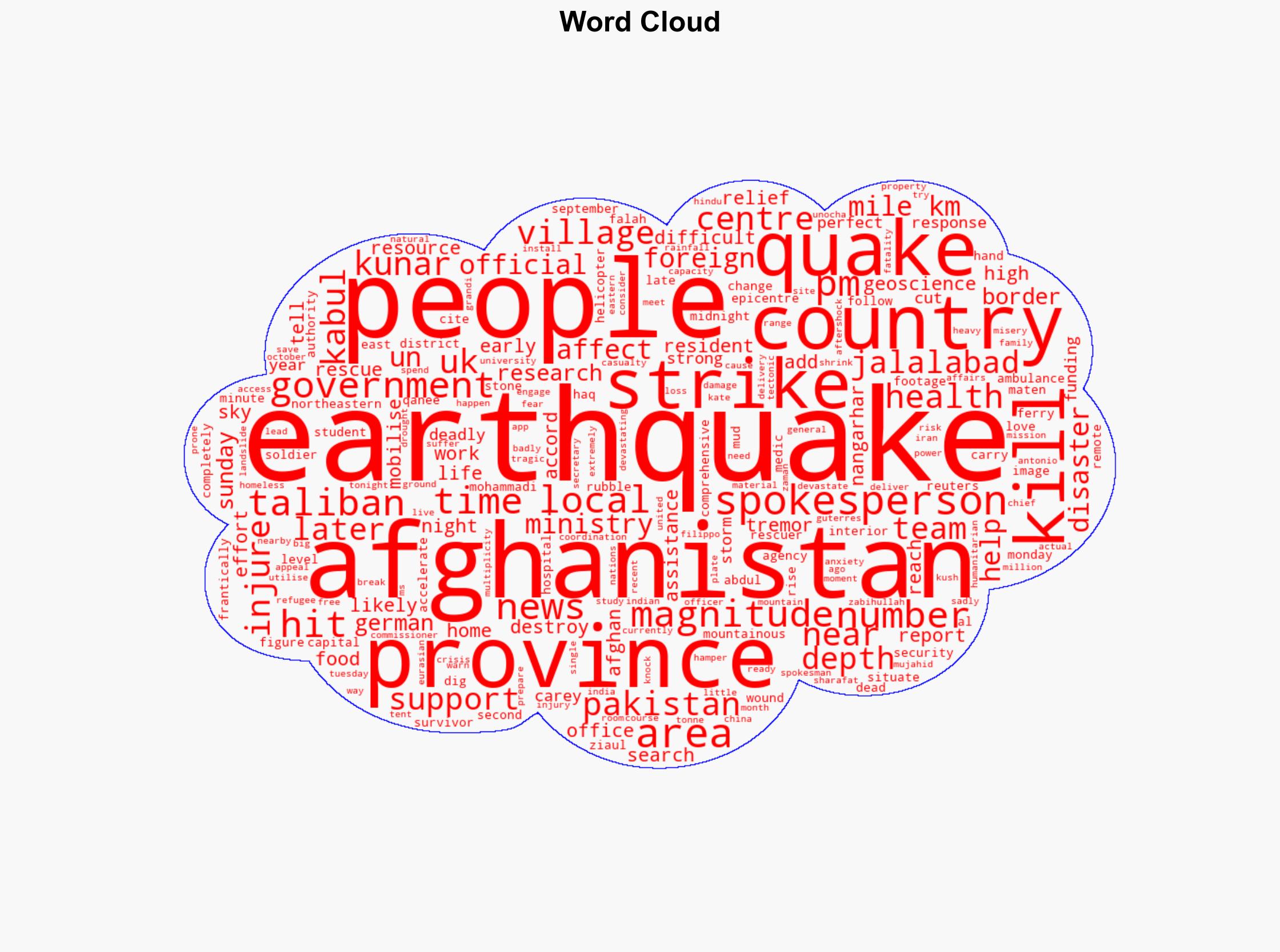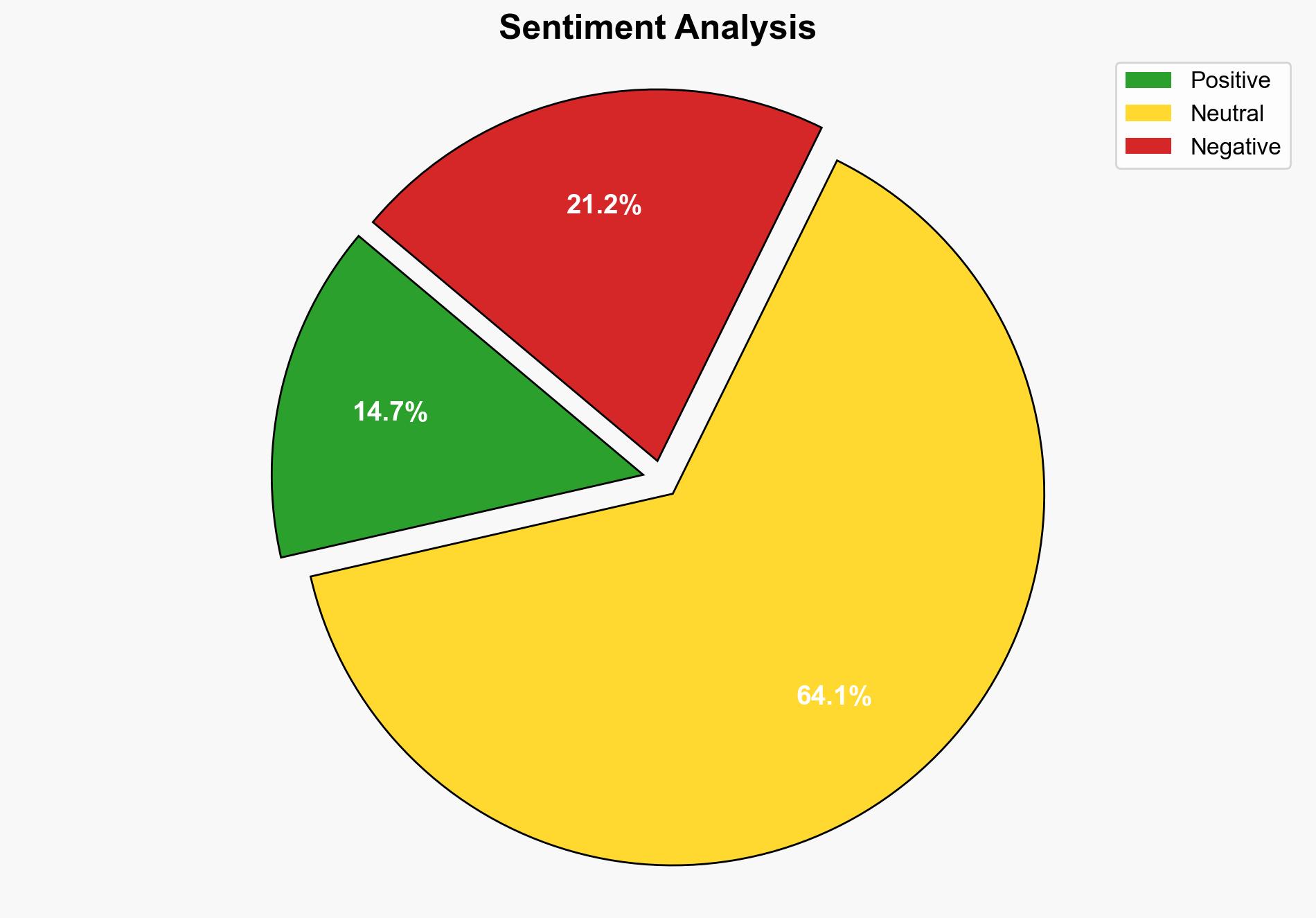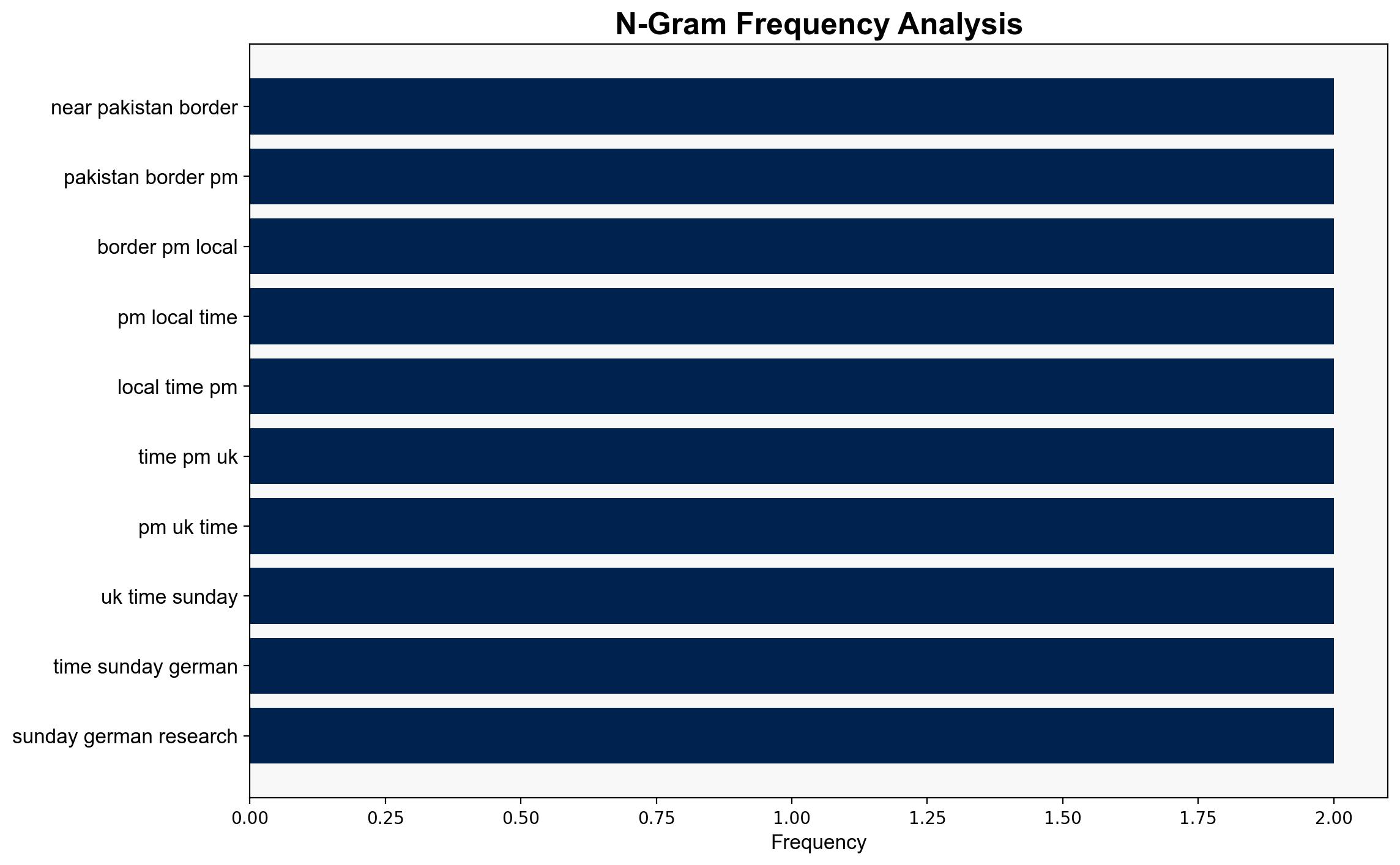Nine people killed and dozens injured in Afghanistan earthquake – Sky.com
Published on: 2025-08-31
Intelligence Report: Nine people killed and dozens injured in Afghanistan earthquake – Sky.com
1. BLUF (Bottom Line Up Front)
The most supported hypothesis is that the earthquake’s impact on Afghanistan will exacerbate existing humanitarian crises, further destabilizing the region. Confidence in this assessment is moderate due to limited access to affected areas and evolving casualty figures. Immediate international humanitarian assistance is recommended to mitigate the crisis and prevent further destabilization.
2. Competing Hypotheses
Hypothesis 1: The earthquake will significantly worsen the humanitarian situation in Afghanistan, leading to increased instability and potential for regional spillover effects. This hypothesis is supported by the existing vulnerabilities in Afghanistan, such as ongoing drought, political instability, and limited infrastructure, which are likely to be compounded by the earthquake’s destruction.
Hypothesis 2: The earthquake’s impact will be contained through effective international aid and local response efforts, preventing significant long-term destabilization. This hypothesis assumes that international and regional actors will mobilize resources swiftly and efficiently to address immediate needs and rebuild affected areas.
3. Key Assumptions and Red Flags
– Assumptions include the availability and willingness of international aid, the capacity of the Taliban government to coordinate relief efforts, and the accuracy of initial casualty and damage reports.
– Red flags include potential underreporting of casualties due to inaccessible areas, political manipulation of aid distribution, and the Taliban’s historical reluctance to accept foreign assistance.
– Inconsistent data regarding the number of casualties and the extent of damage highlight the need for caution in interpreting initial reports.
4. Implications and Strategic Risks
The earthquake could exacerbate existing humanitarian crises, leading to increased displacement, food insecurity, and health challenges. The potential for regional instability is heightened if the Taliban government fails to manage relief efforts effectively, possibly leading to increased migration pressures on neighboring countries like Pakistan and Iran. Additionally, the situation could be exploited by non-state actors to gain influence or disrupt recovery efforts.
5. Recommendations and Outlook
- Immediate coordination with international humanitarian organizations to ensure rapid deployment of aid and resources.
- Encourage regional cooperation to facilitate cross-border assistance and resource sharing.
- Monitor the situation closely for signs of political manipulation or exploitation by non-state actors.
- Best-case scenario: Effective international and local response containing the crisis and stabilizing the region.
- Worst-case scenario: Inadequate response leading to widespread humanitarian disaster and regional instability.
- Most likely scenario: A challenging but manageable crisis with significant international involvement required.
6. Key Individuals and Entities
– Abdul Maten Qanee
– Zabihullah Mujahid
– Ziaul Haq Mohammadi
– Antonio Guterres
– Filippo Grandi
– Kate Carey
7. Thematic Tags
national security threats, humanitarian crisis, regional stability, international aid, disaster response




